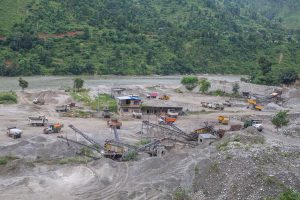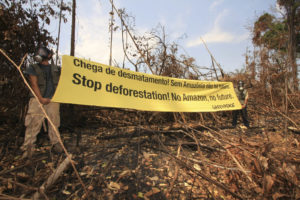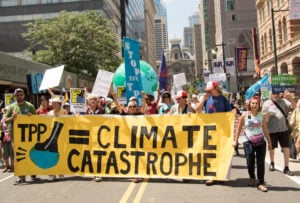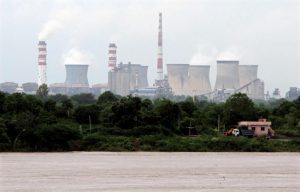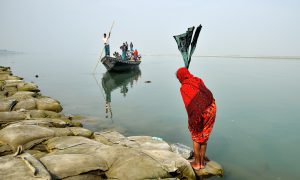A proposal by civic authorities to develop another site inside the East Kolkata Wetlands for solid waste disposal – and by the state government to make changes in land use – have raised concerns that this remarkable ecosystem may be damaged further. The East Kolkata wetlands provide the city with drainage, enormous water resources, and flood protection, but it is also increasingly under threat.
See: Kolkata, a water-rich city turning water-poor
See: Real estate chokes Kolkata wetlands
“Once the present area is exhausted, we have nowhere to dispose the city’s solid waste apart from east Kolkata area, which is a 200 years old practice,” Kolkata’s mayor and West Bengal’s Environment Minister Sovan Chatterjee said in a meeting on March 3. “I request everybody to see if that (the practice) can be accommodated. We assure that no water bodies will be filled up.”
There is also a move to legalise existing illegal activities in the wetlands. In the meeting, environment department officials reiterated the need to modify the existing mandate of no land use in light of galloping urbanisation in the area. “We propose that the wetlands may be divided in three categories — core, buffer and fringe. While there will be no waste body filling anywhere in the wetlands, developments may be allowed in fringe areas,” state environment secretary Arnab Roy said in the meeting that included a Ramsar representative.
The core area is proposed to be around 5,000 hectares (mainly water bodies), the buffer may be of 6,000 hectares and the fringe can be the rest, 1,500 hectares, according to official sources. The minister wants the map of the wetlands to be redrawn in the light of ground level reality. “We need at least 140 hectares of land for solid waste management in the wetlands as of now,” a senior official in the civic body said, speaking on condition anonymity.
Move opposed
Environmentalists are against the move. The authorities must realise that water bodies and lowland farms within the wetlands have combined to develop the unique ecosystem and any encroachment on its land will grossly impact the process, an environmentalist said. “The city is getting it (waste water management) free, which otherwise would have required thousands of crores. Moreover, this wastewater is used to cater to fisheries and agriculture. It is difficult to comprehend why the government is keen on destabilising such a unique natural system in lieu of a few crores in its coffer,” said Tapas Ghatak, former head of environmental cell of Kolkata Metropolitan Development Authority.
![A meeting of Sabuj Mancha, an association of civil society organisations [image by Jayanta Basu]](/wp-content/uploads/2017/03/Protest.jpg)
The 12,500 hectares of East Kolkata Wetlands is overseen by a management authority and protected by a series of judicial verdicts. It not only serves as the city’s kidney with millions of litres of wastewater treated every day, it also uses the wastewater for fisheries and vegetable farming — a rare global example of use of wetlands.
Better management
Waste management experts point out that if the city follows rules of waste segregation at source, recycling and management, the volume of waste will decline and would thus require less land to dispose it. “The city presently is clearly violating the mandate of existing waste management rules with virtually no source separation of various categories of waste and hardly any emphasis on recycling or composting. It seems only keen to keep the major thoroughfares free of waste by using costly compactors to compact the waste to a smaller volume and dump, little realising that the volume will increase in dump yards and that’s not a sustainable solution,” said Sasanka Dev of non-profit Disha, which has been working on waste management.
Three development proposals were placed in the meeting — A INR 300 million plan to build an Eco Park on seven hectares of land by Kolkata Environmental Improvement Project; an agricultural-cum-cultural centre over 5.6 hectares by Jadavpur University; and an eco-tourism hub by the tourism department.
Currently, land use cannot be changed in the wetlands, according to a Kolkata High Court verdict of 1992. Two Kolkata High Court division benches upheld the verdict, and in 2016, the Supreme Court allowed a water project within the wetlands but warned that the allowance could not be used for further development.
Show me a plan
The Ramsar official in the meeting demanded a more specific plan. “You are yet to develop the mandatory management plan despite the East Kolkata Wetlands receiving its Ramsar status in 2002,” Lew Young, a senior advisor of the Ramsar secretariat, said in the meeting. “There has been no clear demarcation boundary of the wetlands area.”
The official said that Ramsar could only consider such development requests once a management plan was prepared with clear evidence of urbanisation. Such a plan has to be built up in consultation with all stakeholders such as the civil society and residents. “We had allowed such urbanisation in Hong Kong based on adequate evidence, but you need to come up with appropriate management plan for consideration (allowing change of land use or wetlands map),” Young said.
Chandan Singh, deputy director of the federal environment ministry, pointed out that West Bengal is yet to submit utilisation certificates for the funds received for East Calcutta wetlands since 2012. “Ramsar is an international treaty and union ministry first has to see what the state wants to do before forwarding the proposal to global body,” another union ministry official said. “Till now we have no clue.”
Green lobby up in arms
Environmentalists are strongly opposed to the new plans by the government. Sabuj Mancha, an association of civil society organisations, has demanded a judicial commission headed by either a Supreme Court or a high court judge to inquire into numerous encroachments to fill up the wetlands in blatant violation of judicial verdicts and mandate of the Ramsar treaty.
A charter of demands was tabled in a city meeting on March 1 by number of experts including ecologist Dhrubajyoti Ghosh, who took the initiative to turn the wetlands into an international entity. “All the logic put forward by the government to encroach in the wetlands are grossly misplaced and can be countered,” he said.
The authorities turn a blind eye to violations, some allege. “You can find schools, colleges, meditation centres by religious leaders, housing complexes coming up in the area in complete violation of the judicial directives,” Naba Dutta, secretary of Sabuj Mancha, said in the meeting. “If the government does not listen to us, we will have to move court, as otherwise the East Kolkata Wetlands will soon become history,” said environmental activist Subhas Datta.
![<p>Wastewater fisheries are a unique feature of Kolkata wetlands. [image by Sudeshna Ghosh]</p>](https://dialogue.earth/content/uploads/2017/03/Wetlands.jpg)

